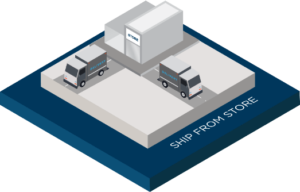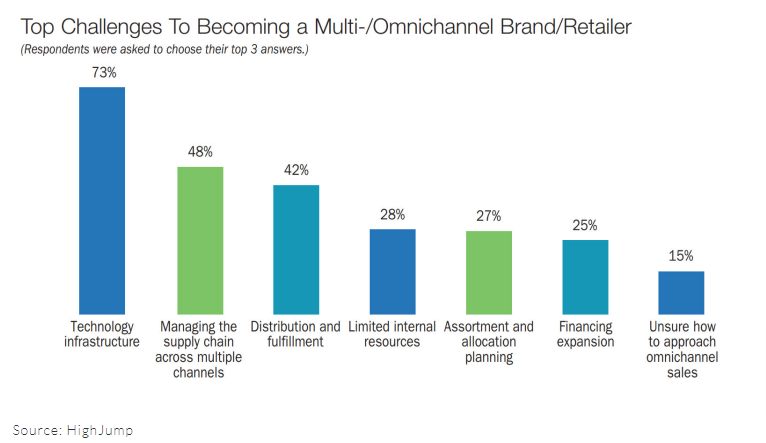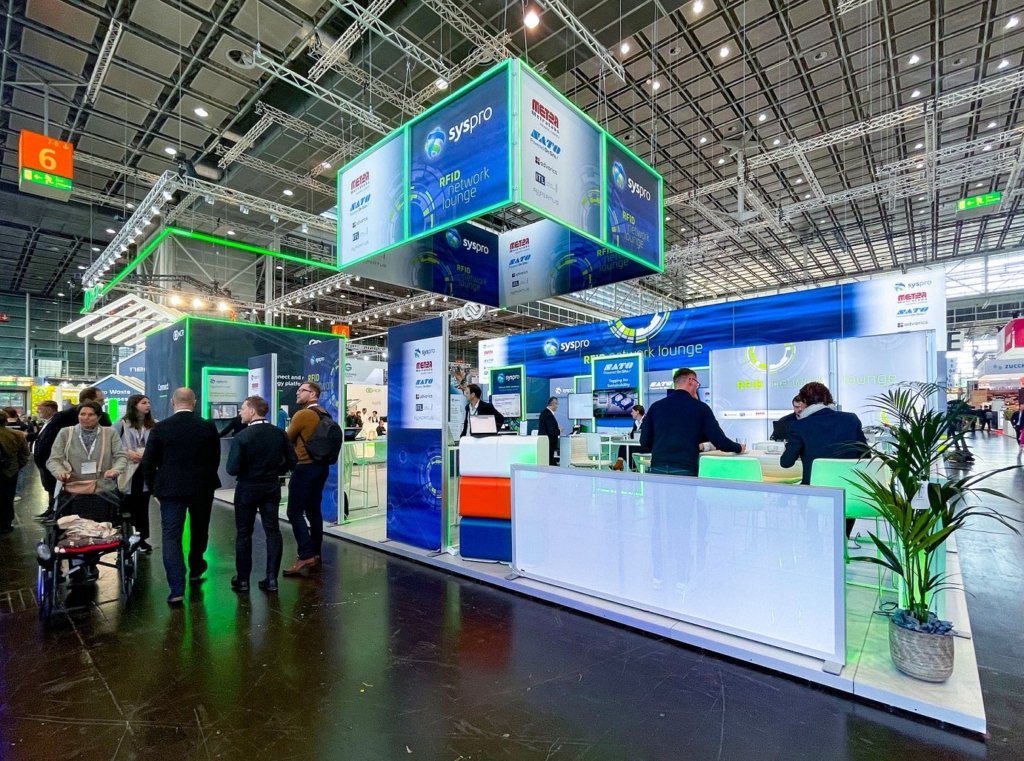How brands can leverage their retail stores as miniature distribution centres to increase efficiency and meet increasing eCommerce demand.
In-Store fulfilment: Why you need to utilise ship-from-store

🏪 What is in-store fulfilment?
In-store fulfilment, also known as ship-from-store, is an Omnichannel retail strategy that essentially involves utilising retail stores as miniature distribution centres. This allows eCommerce orders to be fulfilled and shipped to customers from either the primary DC or a nearby store. Having multiple options for fulfilment available means retailers can take some pressure off DC’s and offer customers more stock and faster delivery by utilising nearby stores.
📦 Could ship-from-store be a viable strategy during the COVID-19 pandemic?
The use of in-store fulfilment and ‘mini DC’s’ has been steadily growing for years, due to both the continued growth of eCommerce as well as the inherent business benefits listed below. In the current climate of COVID-19, with stores closed and the immediate-future uncertain, leveraging closed stores as DC’s could potentially help alleviate the increased pressure on eCommerce operations and help brands achieve business continuity during this time. The practicality of this will vary between brands and even countries, but its possible a reduced small team of staff could run as an effective warehouse during the coming months.
🚚 What are the advantages of using stores as miniature Distribution Centres?
- Takes some pressure off DC’s, meaning a brand can handle increasing eCommerce orders without needing to invest in additional DC’s
- Reduces shipping costs by moving distribution points closer to destination
- Increases delivery speed as orders are shipped from nearby stores
- Idle inventory that is sitting in stores can instead be sold through eCommerce – increases margins by preventing seasonal mark-downs.
- Ship-from-store is an effective and profitable way to prevent inventory stockpiling up at the wrong locations
- Retailers can offer customers more products i.e. not just inventory available at the DC
- Alternative ‘mini-DC’s’ offer fulfilment options if the primary DC is temporarily shut down or disrupted.
- Leverages staff during slow periods for stores or if stores are temporarily closed
- Offers more products/sizes to customers (see figure below)
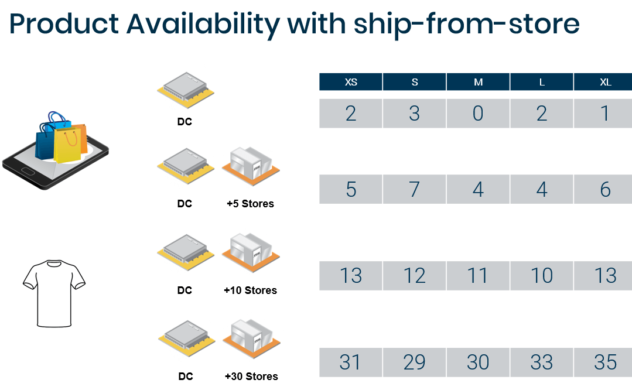
☑️ What is required to leverage stores as DC’s?
Whilst the benefits are huge, getting in-store fulfilment right is a fine balance and requires a certain amount of technology and digital integration across the supply chain. Retailers who attempt to offer ship-from-store (or any omnichannel capability) without these prerequisites will struggle. According to the Accenture study ‘Transforming Modern Retail’, Survey respondents that offer ship-from-store claimed that 31 percent of such orders triggered a split shipment, a result of not having the right foundations in place.
So, what do retailers need in order to utilise in-store fulfilment?
- Inventory Visibility – First and foremost, for cooperation across and between shopping channels, (i.e. for eCommerce to leverage inventory outside of their primary DC) brands need to have inventory visibility across their supply chain and stores. This view of stock needs to be unified between all channels and be as up to date as possible in order to achieve a ‘single point of truth’ for a brands merchandise.
- High Stock Accuracy – Having visibility over all of a brands merchandise is a start, but if this information is not highly accurate, cross-channel initiatives like this one will be fairly ineffective. Retail store inventories can be as low as 70% accurate when it comes to item-level product information. If this is the baseline for ship-from-store, it will result in either split shipments or cancelled orders – resulting in high costs and disappointed customers. For Omnichannel options like this, accuracy needs to be near 99% to confidently offer advanced purchasing options to customers.
- Investment in Stores – To facilitate in-store fulfilment a certain amount of investment needs to be made for stores. This may involve slightly altering the layout of a store, or hiring extra staff, depending on the business. More crucially, investment may need to be made in technology to achieve the accurate inventory visibility required to offer ship-from-store. This may include advanced inventory management technology like RFID.
- Maintained Store Inventory levels – Once this is in place and retailers are utilising in-store fulfilment, care needs to be taken to maintain the balance of store inventory between stock available to be used for eCommerce fulfilment and stock that is available for sale in the store. This is a fine balance to maximise sales between both channels. Retailers must ensure ship-from-store orders do not cause out-of-stocks for the brick-and-mortar store that is fulfilling them.
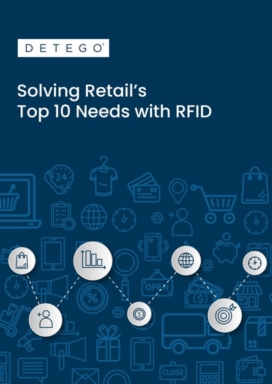
eBook
Solving Retail's Top 10 Needs with RFID
Discover how retail RFID is changing the industry for good. This eBook will guide you through the top 10 needs identified by retailers to ensure sustainable success in the modern environment. Explore the common challenges preventing retailers from achieving their goals and learn how applying smart RFID-based solutions delivers consistently good results.

